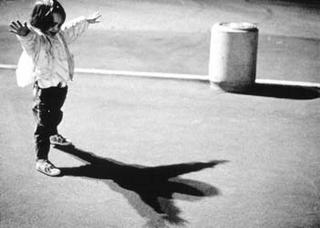 This weekend I had the honor of introducing Carlina Rinaldi, lifelong educator and a member of the City Council of Reggio Emilia in Italy to a large group of teachers and early childhood education advocates at SF's Commonwealth Club. Innovative Teacher Project leader Dr. Susan Lyon had invivted me to present a proclamation from our City to Rinaldi, a worldwide expert in progressive educational reform.
This weekend I had the honor of introducing Carlina Rinaldi, lifelong educator and a member of the City Council of Reggio Emilia in Italy to a large group of teachers and early childhood education advocates at SF's Commonwealth Club. Innovative Teacher Project leader Dr. Susan Lyon had invivted me to present a proclamation from our City to Rinaldi, a worldwide expert in progressive educational reform.The seminar was part of A Collaboration of Three Schools in the Study of the Reggio Approach called Making Learning Visible: A Day Seminar with Carlina Rinaldi: Pedagogista, Consultant to Reggio Children, Reggio Emilia, Italy.
Reggio Emilia in the US -
Since developing in the city of Reggio Emilia in the post-Fascist era after WWII and in that city's revolutionary 1960's period, the Reggio Emilia approach to early childhood education and societal change has spread to hundreds of cities around the world, including San Francisco.
Rinaldi told me that schools in her city are named after revolutionaries such as Brazilian educator/Marxist political theorist Paolo Freire and even Chile's former President Salvador Allende who was assassinated in a US-military-backed coup on Sept. 11, 1973. Before his death in 1997 Freire had helped Reggio Emilia in the early stages of the development of their innovative educational system, according to Rinaldi.
In the US, the National Association for the Education of Young Children (NAEYC) first introduced the Reggio Emilia model of early childhood education at their Anaheim conference in 1987.
Since that time, inspired by the exhibition "The Hundred Languages of Children" and fueled by delegations of educators who have seen firsthand the city and its early childhood classrooms, American interest in Reggio Emilia has grown at a remarkable pace.
From the Exhibit -
"This exhibit opposes any prophetic pedagogy which knows everything before it happens, which teaches children that every day is the same, that there are no surprises, and teaches adults that all they have to do is repeat that which they were not able to learn."
Loris Malaguzzi [one of the founders of the movement]
Loris Malaguzzi [one of the founders of the movement]
San Francisco Unified School District's Presidio Child Development Center and Tule Elk Park Child Development Centers have developed into national models of the implementation of Reggio Emilia in the US.
Most US programs have focused on key features of Reggio Emilia's municipal early childhood program, including:
* the role of the environment-as-teacher,
* children's multiple symbolic languages,
* documentation as assessment and advocacy,
* long-term projects or progettazione,
* the teacher as researcher, and
* home-school relationships.
"All children will find their brilliance."
“Creativity requires that the school of knowing finds connections with the school of expressing, opening the doors to the hundred languages of children.”
— Loris Malaguzzi [one of the founders of the movement]
If you haven't done so, please consider visiting SF's
Presido Child Development Center and the Tule Elk Child Development Center.
For more on Susan Lyon and the Innovative Teacher Project
http://www.geocities.com/msmabry/itp/
or the National Association for the Education of Young Children
For more on the Reggio Emilia approach to early childhood education:
http://zerosei.comune.re.it/inter/index.htm
http://www.ericdigests.org/2001-3/reggio.htm
Here's a great list of Reggio Emilia info:
Wayne State University on the Reggio Emilia Philosophy
http://www.emtech.net/reggio.htm

1 comment:
Early childhood education
Post a Comment